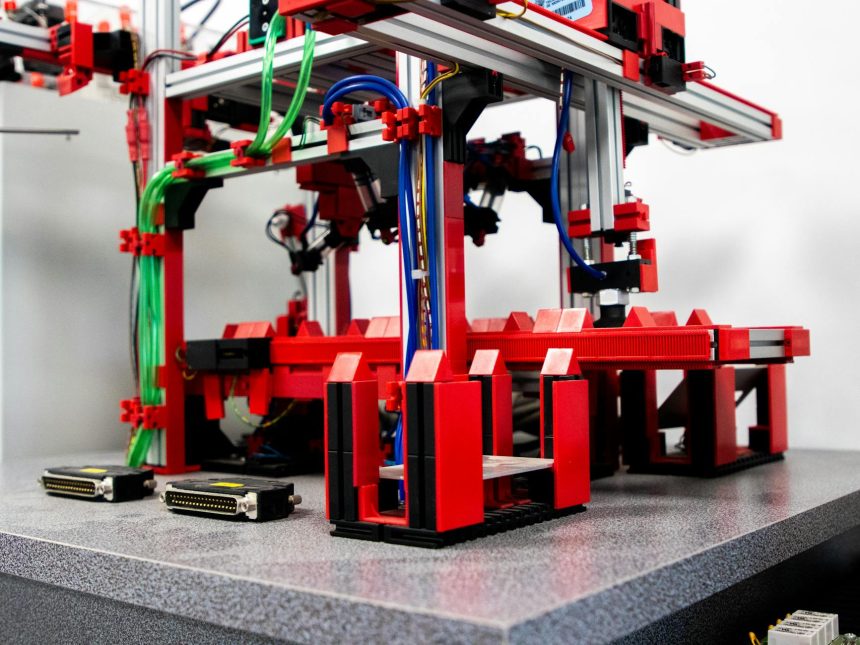Rare Earth Metals: 7 Critical Roles in EVs & High-Tech’s Future
The modern world, with its sleek electric vehicles, powerful smartphones, and efficient renewable energy systems, relies on a hidden foundation: a group of elements known as Rare Earth Metals. These seventeen distinct metallic elements are not necessarily rare in abundance, but their economic concentrations are limited, and their unique magnetic, catalytic, and optical properties make them indispensable. Without these critical components, many of today’s most advanced technologies simply wouldn’t exist, and the innovations driving our future would stall.
This article delves into the profound impact of these often-overlooked elements. We’ll explore their vital functions across various high-tech applications, from the batteries powering your EV to the screens of your digital devices, and discuss the complexities of their supply chain and the push for sustainable practices.
What Are Rare Earth Metals and Why Are They So Critical?
Often misunderstood, rare earth metals are a group of seventeen elements on the periodic table: scandium, yttrium, and the fifteen lanthanides. They are characterized by their unique atomic structures, which give them extraordinary physical and chemical properties. These properties are precisely what make them invaluable for advanced technological applications.
The 17 Elements: A Closer Look
While all seventeen elements contribute to various applications, some are particularly prominent. Neodymium and praseodymium are crucial for powerful magnets, while europium and terbium are vital for vibrant displays. Dysprosium and terbium enhance magnetic performance at high temperatures, critical for electric motors.
The Indispensable Role in Modern Innovation
These elements are not typically used in large quantities, but their presence is often non-negotiable. They act as catalysts, enhance efficiency, reduce weight, and enable miniaturization in ways no other materials can. Consequently, their demand continues to surge alongside global technological advancement.
Rare Earth Metals: Fueling the EV Revolution and Green Tech
The transition to a greener economy heavily depends on the unique properties of rare earth metals. They are foundational to both electric vehicles and the infrastructure required to generate clean energy.
Powering Electric Vehicles: Beyond the Battery
When we think of electric vehicles (EVs), our minds often jump to lithium-ion batteries. However, rare earth elements play an equally critical role in the electric motors that propel these vehicles. Powerful permanent magnets, often made with neodymium and praseodymium (sometimes enhanced with dysprosium and terbium), are essential for efficient, compact, and high-performance EV motors. These magnets allow for lighter vehicles with greater range and power.
Renewable Energy’s Hidden Backbone
The shift towards renewable energy sources like wind and solar power also relies heavily on these elements. Large wind turbines, especially offshore models, utilize massive rare earth magnets in their generators to convert wind energy into electricity efficiently. Similarly, certain solar panel technologies and energy storage systems benefit from rare earth compounds for enhanced performance and durability.
The Unseen Powerhouse: Rare Earths in High-Tech Electronics
Beyond green energy, rare earth metals are embedded in the fabric of our digital lives, powering a vast array of high-tech applications.
From Smartphones to Satellites: Everyday Applications
Your smartphone, tablet, and computer all contain various rare earth elements. Europium and terbium provide the vibrant colors in display screens. Lanthanum is used in camera lenses to improve image quality. Gadolinium, yttrium, and cerium are found in components like speakers, microphones, and even the tiny vibrator motors that give haptic feedback.
- Smartphones: Displays, speakers, microphones, vibration motors, camera lenses.
- Computers: Hard drives, displays, memory chips.
- Televisions: LED and OLED displays for vivid colors.
- Medical Imaging: MRI machines (neodymium magnets), X-ray screens (gadolinium).
- Automotive: Catalytic converters (cerium), sensors, navigation systems.
Advanced Defense and Medical Devices
The applications extend to highly specialized fields. In defense, rare earths are crucial for guidance systems, lasers, and advanced radar. In medicine, they are integral to MRI machines (using powerful neodymium magnets) and various diagnostic tools, enabling precise imaging and treatment capabilities.
Navigating the Complexities: Supply Chains and Sustainability
Despite their critical importance, the supply chain for rare earth metals is complex and often concentrated in a few regions. This concentration presents significant geopolitical and environmental challenges.
Geopolitical Implications and Market Dynamics
The extraction and processing of rare earth elements can be environmentally intensive, leading to concerns about pollution and resource management. Furthermore, the limited number of major producers creates vulnerabilities in global supply, influencing market prices and international relations. Countries worldwide are increasingly focused on securing diverse and stable sources.
The Imperative of Responsible Sourcing and Recycling
Addressing these challenges requires a multi-faceted approach. Sustainable sourcing practices, including minimizing environmental impact during mining, are paramount. Furthermore, developing robust recycling infrastructure for end-of-life products containing rare earths is crucial for reducing reliance on new mining and fostering a circular economy.
To learn more about global mineral supply chains, consider visiting the U.S. Geological Survey (USGS) for detailed reports.
The Future of Rare Earth Metals: Innovation and Alternatives
The ongoing demand for rare earth metals is driving significant innovation in both their extraction and the development of alternative materials.
Emerging Technologies and Demand Growth
As new technologies emerge, so does the demand for specific rare earth elements. Artificial intelligence, quantum computing, and advanced robotics are all poised to require these unique materials. Researchers are actively exploring new ways to extract rare earths more efficiently and with less environmental impact. This includes innovative leaching methods and new separation techniques.
- Enhanced Extraction: Development of more environmentally friendly and efficient mining techniques.
- Recycling Technologies: Advancements in processes to recover rare earths from electronic waste.
- Substitution Research: Exploring alternative materials that can replicate rare earth properties.
- Sustainable Supply Chains: Building resilient and diversified global supply networks.
Towards a Circular Economy for Critical Elements
The long-term vision involves moving towards a truly circular economy where rare earth metals are continually reused and recycled, significantly reducing the need for new mining. This requires collaborative efforts across industries, governments, and consumers.
For further insights into critical raw materials and their role in energy transitions, consult reports from the International Energy Agency (IEA).
Conclusion
Rare Earth Metals are undeniably the unsung heroes of our technological age. From powering the green revolution with electric vehicles and wind turbines to enabling the everyday marvels of smartphones and advanced medical devices, their impact is profound and pervasive. While challenges in sourcing and sustainability exist, ongoing innovation and a global commitment to responsible practices are paving the way for a more secure and sustainable future for these critical elements.
Ready to explore the future of technology? Discover how innovation and responsible sourcing of rare earth metals are driving tomorrow’s advancements.
Rare Earth Metals are vital for electric vehicles, smartphones, and green energy. This article explores their critical roles in high-tech applications, the complexities of their supply chain, and future innovations.
Stylized image depicting rare earth metals (e.g., metallic elements in vials) intertwined with futuristic technology like an electric car charging, a smartphone, a wind turbine, and circuit board patterns, emphasizing their critical role in high-tech applications.
Featured image provided by Pexels — photo by Ludovic Delot







